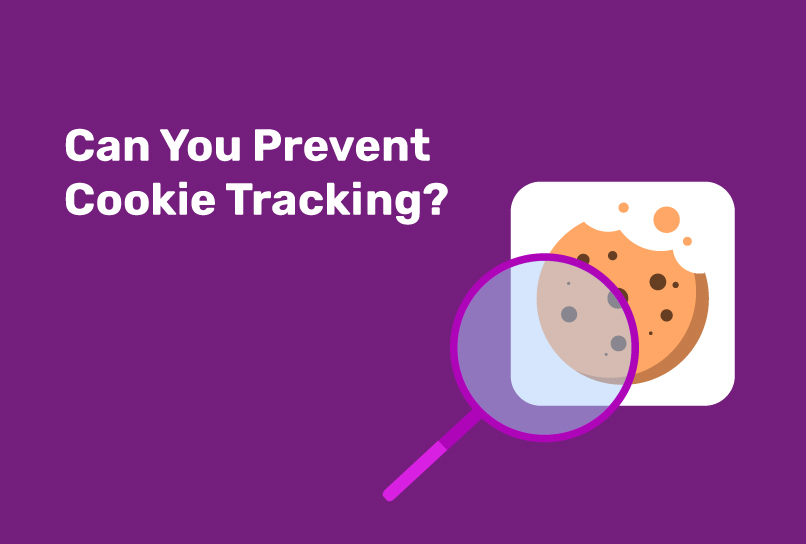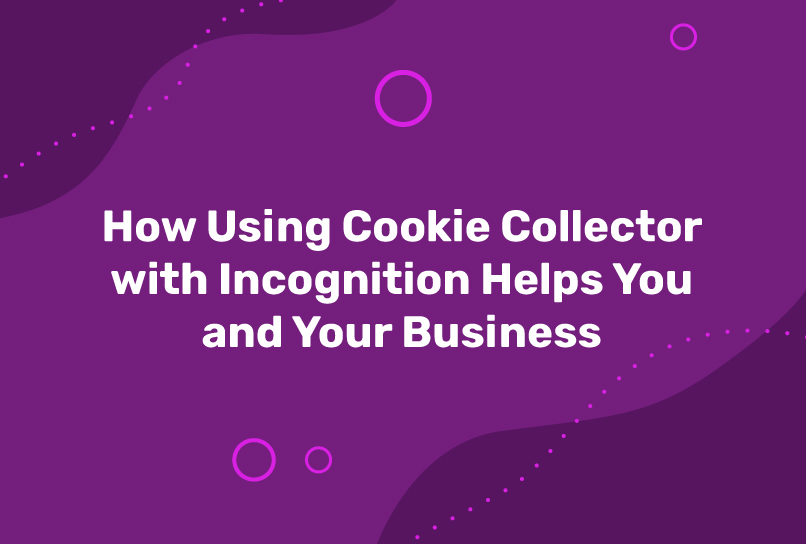Have you ever been in a situation where you thought you were safe from detection, using an anti-detect browser, only to end up banned or restricted? You’re not alone. You see, modern websites employ sophisticated algorithms that can detect and flag unnatural browsing patterns, rendering anti-detect browsers ineffective. But fear not! We have just the solution to that — Incogniton’s Cookie Collector.
Think of the Cookie collector as a virtual assistant responsible for warming up your fresh browser profiles by visiting a list of websites selected by you – interacting with them, and generating cookies along the line. By doing so, your activities appear natural to websites’ algorithms when you begin actual tasks. Sounds cool?
In the following sections, we’ll explore what a Cookie Collector is and the benefits of combining its use with an anti-detect browser for you and your business. But first, here’s a quick recap on cookies:
What are Cookies and What are They Used For?

Cookies are small text files that websites save on your computer or mobile device’s browser by websites you visit. These files contain small amounts of data, typically including a unique identifier, website name, and some key-value pairs with user-specific information.
Cookies serve a dual purpose: enhancing user experience and enabling targeted advertising. On one hand, they enhance your browsing experience because they remember your preferences, login credentials, items in shopping carts, and other settings.
On the other hand, however, cookies also enable websites to monitor your behavior across multiple visits, raising privacy concerns.
There are several types of cookies, each serving a different purpose:
1. Session Cookies
These temporary cookies are created when a user visits a website and remain active until the browser is closed. Session cookies facilitate essential functions like remembering items in a shopping cart or tracking user activity within a single browsing session. They are automatically deleted when the user exits the browser.
2. Persistent Cookies
Unlike session cookies, persistent cookies have an expiration date set by the website and remain stored on the user’s device even after the browser is closed. These long-lived cookies are commonly used to remember user preferences, login credentials, and browsing history across multiple sessions, providing a more personalized experience.
3. First-Party Cookies
Also known as origin cookies, first-party cookies are set by the website the user is currently visiting. These cookies enable essential website functions, such as remembering language preferences or maintaining an active login session.
4. Third-Party Cookies
These cookies are set by domains other than the one the user is visiting, typically by third-party services like advertising networks or analytics providers. Third-party cookies are commonly used for tracking user behavior across multiple websites, enabling targeted advertising, and collecting analytics data.
While cookies are designed to improve the browsing experience, their ability to track user activity poses privacy concerns. Websites can use cookies to create detailed user profiles, including browsing histories, interests, and demographic information, which can then be used for targeted advertising or sold to third-party data brokers.
Can You Prevent Cookie Tracking?

The short answer is yes. It is possible to prevent cookie tracking or at least limit it to some degree.
Thanks to regulations like the GDPR, users now have the option to accept or reject cookies. However, this doesn’t fully eliminate the privacy concerns because some cookies are still retained. Also, many users choose to clear their cookies regularly or enable browser settings that block or limit cookie tracking.
However, this approach can also negatively impact the user experience by requiring frequent re-entry of login credentials and preferences. These methods are so very limited when it comes to managing multiple accounts effectively in the long term.
Can Incognito Mode Prevent Cookie Tracking?
No. Incognito mode (or private browsing modes in some browsers) might be prescribed as the next best solution because it prevents these cookies from being stored on your device but it has its limitations.
Relying solely on incognito modes can be problematic for several reasons:
- Limited Session Duration: Incognito sessions are temporary and terminate once the browser window is closed, requiring users to constantly recreate new sessions for each account.
- Lack of Persistent Profiles: Incognito modes do not allow for the creation and preservation of unique browsing profiles, making it challenging to maintain distinct online identities over time.
- Inconsistent Browsing Behavior: Switching between incognito sessions and regular browsing can result in inconsistent browsing patterns, which may be detected by websites as suspicious activity.
The mode is designed for one-off private browsing sessions and does not offer the necessary tools to separate and manage cookies for different accounts effectively. So for those looking to manage multiple accounts, Incognito mode is often not the way to go.
Why Does Good Cookies Management Matter for Multiple Accounts?
As established earlier, cookies play a crucial role in how websites perceive account trustworthiness. Cookie data gives website owners valuable insights into a user’s browsing history, preferences, and online activities. They then use the information to build a profile for the user and also to identify irregularities in how they access the website.
For instance, if multiple accounts exhibit identical browsing patterns or share the same cookies, websites may assume that these accounts are controlled by a single entity. This often raises red flags—it may be interpreted as potential bot activity or account farming practices—and can result in account suspensions or terminations.
So, to truly prevent cookie tracking and maintain separate online identities, a more robust solution is required – one that not only separates cookies but also allows you to maintain authentic user activity across accounts.
The solution lies in using Incogniton’s Anti-Detect browser in conjunction with their Cookie Collector tool.
What is a Cookie Collector?
Cookie Collector is a tool to automatically generate cookies and increase the reliability of your browser profiles.
The tool helps simulate activity on the profile and as such keeps websites from tagging the browsing activities on the profile as bot-like. This means you can have specific cookies associated with specific profiles or tasks, ensuring a cleaner and more controlled online experience.
Incogniton’s Cookie Collector — a feature added V.2.6.0.0. update offers all these alongside a high level of granular control, ensuring that only relevant cookies are loaded or saved. Users can create an “Example List” of websites for the Cookie Collector to visit, set the duration for cookie collection, and enable Headless mode for background operation even when the browser profile is not visibly launched.
Let’s take a closer look at some of the feature’s configurations and settings aimed to further tailor the browsing experience:
- Example List. Users can opt to collect cookies based on a predefined list of popular websites. This simplifies the setup process and ensures comprehensive cookie collection.
- Crawling Options. Users have the flexibility to configure the Collector to randomly visit the listed websites and click links during browsing. These actions mimic human behavior and enhance the authenticity of the browsing history.
- Audio Muting. To avoid disruption, users can choose to automatically mute audio on websites that play sound. This is particularly useful when running multiple profiles simultaneously.
- Headless Mode. The Collector can operate in “Headless mode,” where it performs its tasks in the background without launching the browser profile visibly. This allows for discreet operation and efficient cookie collection.
- Time Settings. Users can specify the duration for which the Cookie Collector operates by setting the desired number of minutes. This provides control over the duration of the browsing activity and cookie collection process.
Why is Using Cookie Collector with Incogniton Necessary?
The primary goal is to never leave a loophole for vulnerability. With Incogniton, Cookie Collector addresses a critical security gap by preventing unauthorized cookie collection.
By simulating activity on browser profiles, the Cookie Collector prevents websites from flagging browsing activities as bot-like, thus reducing the risk of bans or restrictions.
Check out the guide on how to use the Cookie Collector feature on Incogniton below:
Generating cookies automatically with the Cookie Collector of Incogniton
How Using Cookie Collector with Incogniton Helps You and Your Business

Whether you’re an individual user seeking enhanced privacy control, a business conducting website testing or market research, or simply someone looking to streamline their online workflow, the combined power of Cookie Collector and 2024’s best antidetect browser offers a comprehensive solution tailored to your needs.
The combination of Cookie Collector and Incogniton offers a compelling value proposition for both individuals and businesses alike. It addresses a wide range of needs and delivers two tangible benefits that enhance your overall digital experience:
1. Optimize your performance
Whether you’re a professional juggling multiple online accounts or an individual with diverse browsing needs, Cookie Collector can amp up your organizational capabilities and thus streamline your workflow.
By generating specific cookie sets for your different browsing purposes, you can effortlessly switch between contexts without losing your personalized settings or preferences. This level of organization and efficiency can significantly boost your productivity and minimize frustration.
2. Improve account security
Because you can now generate specific cookies for a specific profile, you will be able to minimize exposing data from one profile to another. Online tracking might be impossible to prevent but you essentially determine what these trackers see with this combination.
Adding this to the Incogniton’s anti-fingerprinting tech gives you control of your online privacy like never before.
3. Enhanced anonymity
By ensuring human-like interaction, Cookie Collector fortifies your anonymity. This added layer of authenticity significantly reduces the risk of detection, ensuring a safer and more private online experience. Talking of enhanced anonymity, you may want to check out Incogniton’s guide on browser fingerprinting.
4. Scale Quicker
It’s easier to scale when the boilerplates are taken care of, and that’s what Cookie Collector offers. Be it web-scraping, automating, or just conducting market research on industry-related websites, you get to scale quicker while minimizing the risk of restrictions.
5. Maintain compliance
You can easily reduce the likelihood of violating terms of service, which usually includes not using bots, scripts, or other forms of automation since your activities appear more natural.
Using Cookie Collector with Incogniton: A Step-by-step Guide
This guide assumes you already have an Incogniton account and have installed the app on your device. If you haven’t done so already, visit incogniton.com to get started.
We also assume that you have set up the different browser profiles you desire. (This is a guide on how you can go about that if you still need to do so). Once you have done these two things, the following steps are what it looks like to use the Cookie Collector.
- Step 1: Launch Incogniton on your computer.
- Step 2: Click on the three lines in the top right corner of your display, select “Cookies” and then, “Cookie Collector.” A pop display will appear on your screen.
- Step 3: Enter the URLs of websites where you want to collect cookies e.g., https://www.youtube.com/ in the space provided. Ensure the URLs start with “https://” for proper functionality.
- Step 4: Click the “Start collecting” button. Incogniton will visit the listed websites in your chosen profile and collect relevant cookies.
Incogniton works in a way that you get a smooth transition and a consistent experience for each account you manage when you switch between browser profiles.
Conclusion
The combination of Cookie Collector and Incogniton empowers you to take control of your multi-accounting tasks without risking account bans or restrictions on top platforms.
Whether you’re an individual seeking enhanced privacy and a streamlined browsing experience or a business looking to optimize your online operations, these two tools allow you to take control of your online presence, maximize efficiency, and maintain a high level of privacy and security.
So, what are you waiting for?
Give Cookie Collector and Incogniton a try today and experience how easy cookie management and anonymous browsing can be. Don’t forget to explore our extensive knowledge base for additional tips, tricks, and best practices on leveraging the full potential of Cookie Collector and Incogniton.
Anti-Detect Browser for Multi-Account Management
Manage unlimited virtual profiles for easy multi-account management. Safe and anonymous. Ideal for teams and individuals. Download and try for free now!


Comments are closed.